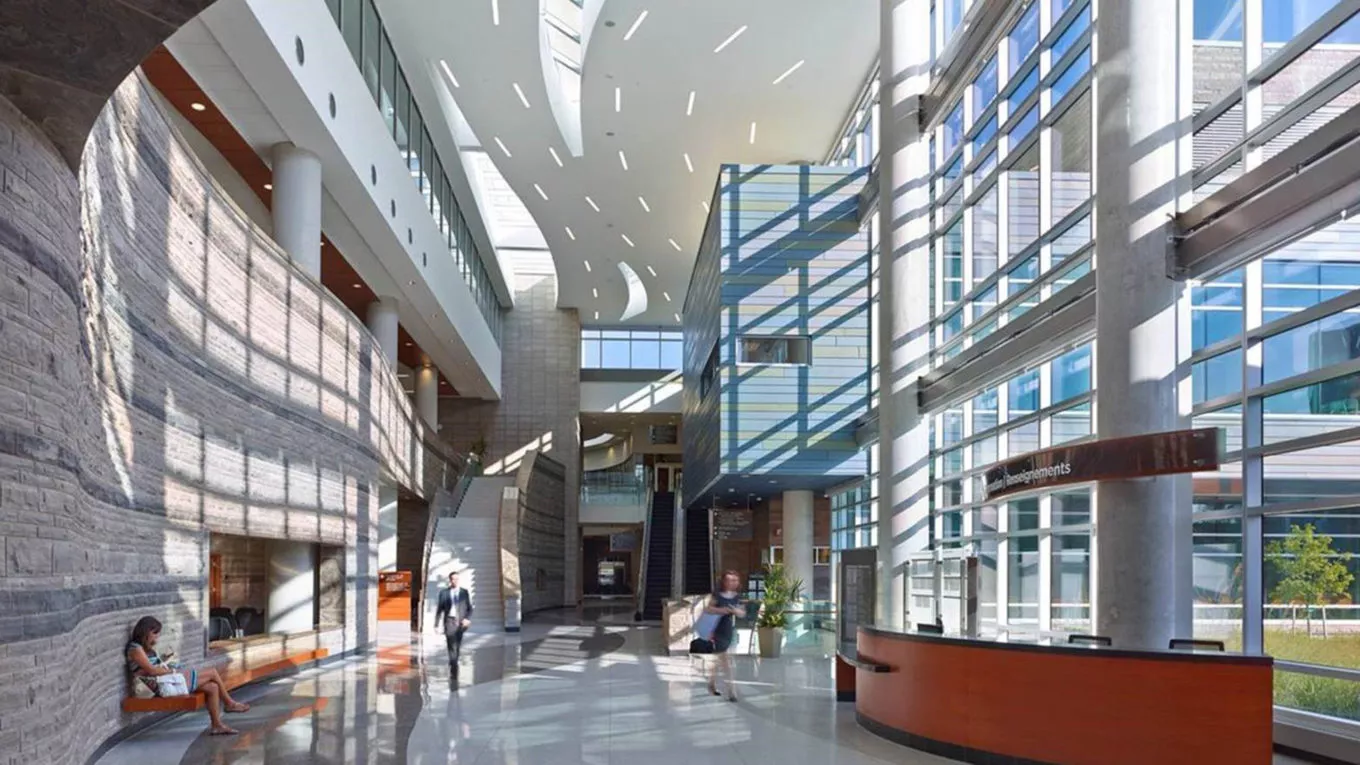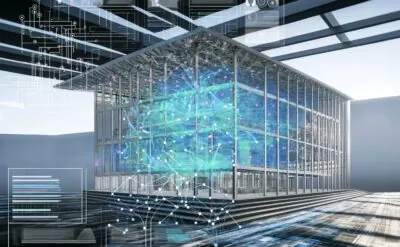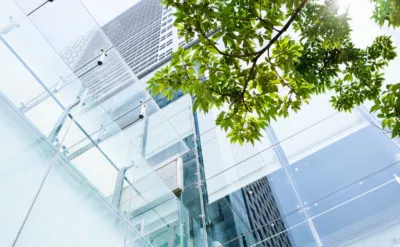The pandemic has accelerated the use of technology in the Justice sector in a decisive way. As architects and engineers, we are responding to the new realities of justice clients through design to support digital-savvy features across the spectrum of virtual testimonies, real-time access to services, and digital wayfinding. The integration of technology into courthouse design also works to improve safety, security, access, accessibility and well-being.
The Virtual Courtroom
For all industry sectors, the pandemic has accelerated the dependency on communication technology. The virtual courtroom appearance, once an exception, is now becoming more commonplace in Canada and the US. Short-term strategies to deal with the pandemic will inevitably drive long-term change and innovation. This shift to virtual court proceedings has revealed several unexpected improvements. People that would have struggled to travel and take a day off to attend a trial or deal with court business may be able to do it remotely. Juries in some US jurisdictions are getting a much more representative pool of participants, and court proceedings are better attended. The challenge to access justice in this new future may not be transportation and distance but rather equivalent access to digital technology. For some, this will be just a different hurdle to overcome. To manage this digital access, some communities are installing computer terminals in libraries and community centers.
Some trends in the Ontario jurisdiction were already moving towards a more digital existence before the pandemic. Courtrooms were being set up for complete video conferencing for interaction with participants not present in the hearing room and with in-courtroom consulting booths, allowing lawyers a private place to consult with their clients when they are appearing from a remote location. The ability for in-custody accused to appear remotely is also being increased in custodial facilities. We are also seeing innovations in the delivery of court interpretation services. In one project there is a separate remote suite dedicated to interpretation services that can access, through audio and video technology, not just court proceedings within the building but across the province. This type of technology is critical to providing real-time access to critical interpretation services in multilingual jurisdictions.

Waterloo Region Courthouse in collaboration with the Ministry of the Attorney General. Photo Credit: Shai Gil
Accessibility and Sustainability
In an environment that pursues fairness and equality, we must design more accessible and sustainable buildings. Courthouses must feel safe and welcoming for everyone. We’re designing our buildings with an emphasis on accessibility for all participants as a fundamental part of the justice system, with barrier-free routes throughout, barrier-free positions for judges, witnesses, jurors and panelists and the public and features tactile navigation, digital kiosks and adjustable millwork. Our concept of accessibility also includes feature design elements such as open atriums and glass-filled public spaces that contribute to a welcoming environment and the feeling of transparency in the justice system.
We also focus on strengthening the links and relationship between courthouses and the communities they serve. In the Elgin County Courthouse in St. Thomas, ON we designed display cases with local artifacts and heritage plaques that celebrate and explain the courthouse context and are continuing this strategy in recent courthouse design.
Justice buildings are also moving towards a more environmentally sustainable approach as we look towards addressing the challenge of global warming. We have completed several LEED® Gold courthouses and have a number of others going through the LEED® process now – including one with a full rooftop solar field. We have also explored displacement ventilation in courts including the Surrey Courthouse redevelopment in British Columbia that enabled a much smaller mechanical system and energy footprint in addition to better courtroom air quality.
In the justice field, sustainability has been defined by the American Academy of Justice Architecture as including more than the traditional notions of a commitment to the environment. It is also about supporting a society that is just and resilient. This includes looking for alternatives to incarceration and, in many jurisdictions, the development of alternative dispute resolution opportunities, and specialty courts like Indigenous, Drug Treatment and Mental Health Courts. These alternatives can, where appropriate, refer individuals into more therapeutic programs where they can heal and hopefully break the cycle of recidivism.
These specialty hearing room typologies, new technological developments, accessibility initiatives, cultural linkages and sustainability strategies are all part of an evolving approach to the design of court facilities that support a fair and equitable justice system and are responsive to the needs and values of the community that it serves.



